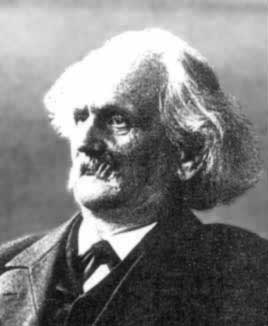


 تاريخ الرياضيات
تاريخ الرياضيات
 الرياضيات في الحضارات المختلفة
الرياضيات في الحضارات المختلفة 
 الرياضيات المتقطعة
الرياضيات المتقطعة
 الجبر
الجبر
 الهندسة
الهندسة 
 المعادلات التفاضلية و التكاملية
المعادلات التفاضلية و التكاملية 
 التحليل
التحليل
 علماء الرياضيات
علماء الرياضيات |
Read More
Date: 22-12-2016
Date: 19-12-2016
Date: 22-12-2016
|
Born: 7 May 1832 in Königsberg, Germany (now Kaliningrad, Russia)
Died: 27 March 1925 in Leipzig, Germany

Carl Neumann was the son of Franz Neumann who has a biography in this archive. His mother was Bessel's sister-in-law. Carl was born and received his school education at Königsberg where his father was the Professor of Physics.
Neumann entered the University of Königsberg where he became close friends with two of his teachers, Otto Hesse and F J Richelot who taught mathematical analysis. After graduating with a qualification to teach mathematics in secondary schools, Neumann continued to study at Königsberg for his doctorate which was awarded in 1855.
After receiving his doctorate, Neumann studied for his habilitation and he submitted his thesis to the University of Halle. He received his habilitation giving him the right to lecture in 1858 when he became a Privatdozent at Halle. He was promoted to extraordinary professor in 1863.
Neumann did not remain at Halle for long after his promotion for he was offered a professorship at the University of Basel. Arriving in Basel in 1863 he only spent two years at the university there before being offered a professorship at the University of Tübingen. However, during these two years in Basel he married Mathilde Elise Kloss in 1875. A slightly longer time, namely three years, spent in Tübingen, from 1865 to 1868, and then Neumann was on the move again, this time to a chair at the University of Leipzig.
Appointed to Leipzig in the autumn of 1868 he gave his inaugural lecture, called an Antrittsvorlesung, in 1869 with the title On the principles of the Galileian-Newtonian theory of mechanics. The German text of this lecture is given in [2]. Neumann held the chair at Leipzig until he retired in 1911 but sadly his wife died in 1875. Wussing writes in [1]:-
Neumann, who led a quite life, was a successful university teacher and a productive researcher. More than two generations of future Gymnasium teachers received their basic mathematical education from him.
He worked on a wide range of topics in applied mathematics such as mathematical physics, potential theory and electrodynamics. He also made important pure mathematical contributions. He studied the order of connectivity of Riemann surfaces.
During the 1860s Neumann wrote papers on the Dirichlet principle and the 'logarithmic potential', a term he coined. In 1890 Émile Picard used Neumann's results to develop his method of successive approximation which he used to give existence proofs for the solutions of partial differential equations. This is discussed in detail in [4].
In addition to his research and teaching, Neumann made another important contribution to mathematics as an editor of Mathematische Annalen. He was honoured with membership of several academies and societies, including the Berlin Academy and the societies in Göttingen, Munich and Leipzig.
Books:
Articles:



|
|
|
|
لصحة القلب والأمعاء.. 8 أطعمة لا غنى عنها
|
|
|
|
|
|
|
حل سحري لخلايا البيروفسكايت الشمسية.. يرفع كفاءتها إلى 26%
|
|
|
|
|
|
|
جامعة الكفيل تحتفي بذكرى ولادة الإمام محمد الجواد (عليه السلام)
|
|
|